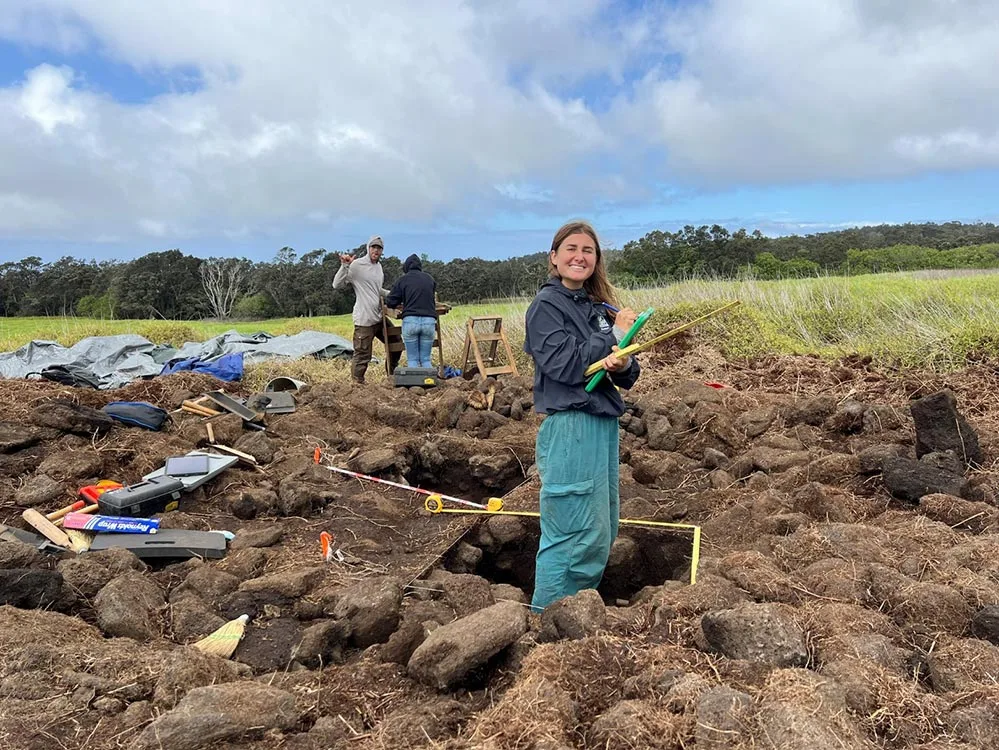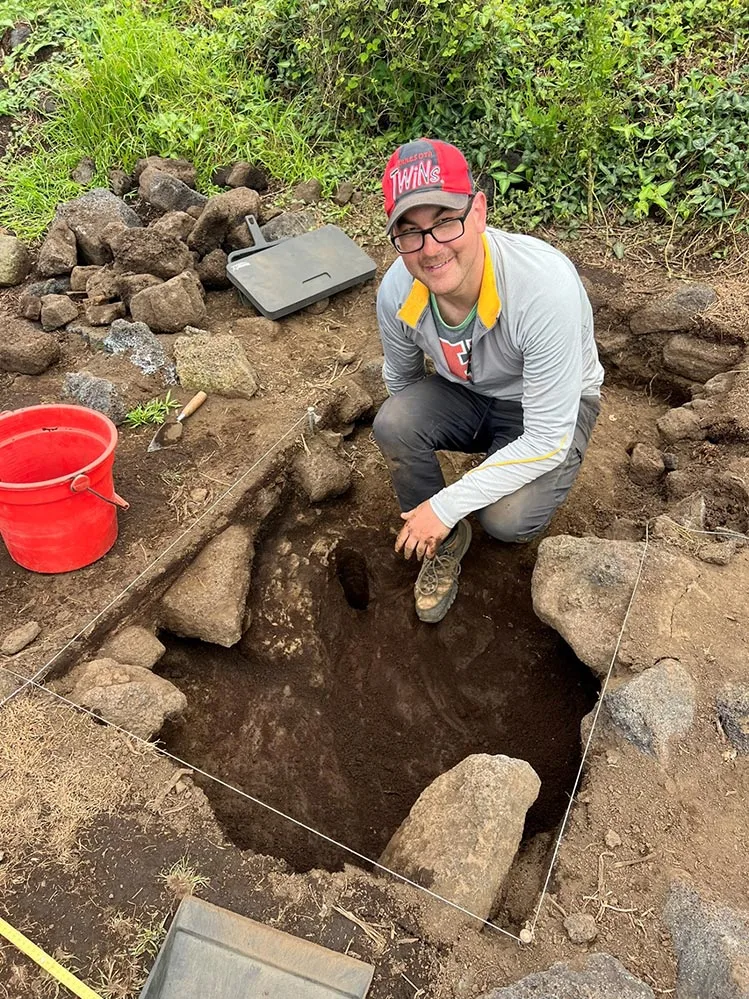The core of archaeological practice takes place in the field, through the surveying, recording, and excavation of sites on the landscape. Thus for students to become fully trained in archaeological methods and techniques requires that they gain practical experience in the field. Recognizing the importance of field training UH has sponsored archaeological fieldschools since the 1960s, mostly in Hawai‘i but sometimes elsewhere in the Pacific or Asia. The summer 2024 archaeological fieldschool, directed by Prof. Seth Quintus, took place within Hawai‘i Volcanoes National Park on the Big Island, in cooperation with the National Park Service. The fieldschool involved six undergraduates and a graduate student TA. Two of the undergraduates, Abigayle Claus and Patrick Wilson, recently recounted their experiences on the project.
Patrick noted that field training was essential for his goal of pursuing a career in archaeology, and he was excited to participate in the UH fieldschool because it was designed around research on the ancient Kā‘u dryland agricultural system. Abigayle, who also wanted to gain hands-on experience, decided to take the field course after listening to the stories of fellow students who had enjoyed the 2023 fieldschool, also in Kā‘u.
“When I arrived,” recounts Patrick, “I had no idea how to even identify possible archaeological sites, much less excavate and interpret what I was looking at. At the end of the three weeks, I was comfortable setting up and excavating test units, profiling, screening, assisting with surveys, drawing tape and compass maps, identifying many kinds of materials and artifacts.”
Abigayle praised their mentor, Dr. Quintus, for what she calls his “crawl-walk-run” approach to learning. “Archaeology is inherently destructive, there are often no ‘take-backs’ and it can be quite stressful to realize that you’ve mismeasured, failed to recognize a change in stratigraphy, or made some other mistake. Fortunately, Dr. Quintus never seemed upset when we made these mistakes. Instead, he always reassured us that making mistakes is how you improve and turned each one into a learning opportunity.” Aside from learning how to map and excavate, Abigayle notes that Dr. Quintus “was able to display the relevance of geology, mo‘olelo, ecology, physics, pedology, chemistry, and spatial analysis, among others, to archaeology.” Moreover, throughout the project he emphasized the importance of community outreach.
The daily routine of the fieldschool involved a lot of hard work, sometimes in cold and rainy conditions, but there were high points as when, as Abigayle recalls, during the morning drive to the site “there were often multiple rainbows guiding our path through the valleys and cliffs.” Patrick won’t soon forget the eruption of Kilauea that occurred during their stay: “During the evening leading up to it, we felt several tremors and received news that it was likely to erupt. Sometime around 1am, it finally happened. Accompanied by a very loud BOOM, it was the largest quake I’d ever felt, rattling the entire cabin.”
The UH archaeological fieldschool will continue in the summer of 2025, again at the Kā‘u site, when another cohort of students will be able to experience archaeology “at the trowel’s edge.”

